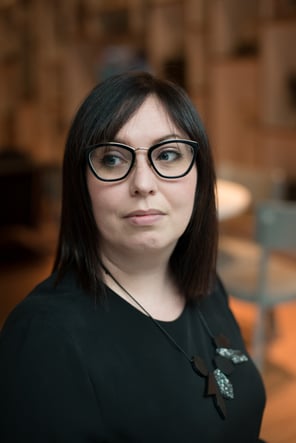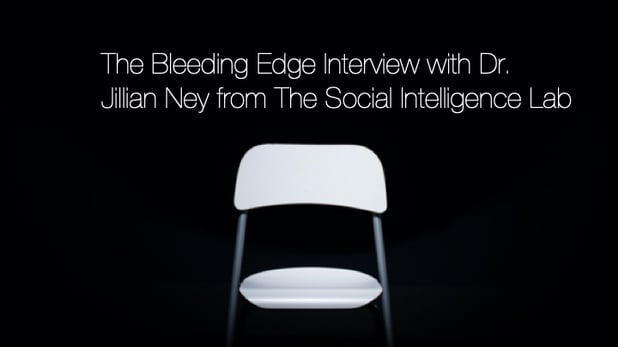Hopefully you had a chance to read Wendy Scherer’s from Social Studies Groups Interview, that spoke to the long tail of social data. Today we interview Dr. Jillian Ney the founder of the Social Intelligence Lab. Jillian consistently pushes the limits of social data and has authored some amazing research focused on pushing the outer limits of what the tool providers and suppliers can do.

First of all, what is your background?
Dr Jillian Ney is the founder of The Social Intelligence Lab. She has worked in the industry for 12 years as researcher, consultant, spokesperson, and author. She’s on a mission to bring the industry together and give social intelligence the place it deserves as a recognized and supported discipline. Ask her about digital behavioral science, purchasing decisions and why Scotland is the best place on earth.
What is the bleeding edge for with regards to data?
I’ve been finding the trend analysis work coming from Converseon and Black Swan interesting. I’ve always been sceptical of prediction studies, all projects and papers I had read were always modelled the data after the event – it’s easy to model data when you already know the outcome, what’s harder to predict is the future.
I’m curious about their work as I’ve always analysed social data from a qualitative perspective. This trends work is different, and there are some great takeaways for anyone who analyses social data – mostly the focus on data quality and data accuracy. These are important topics and one’s that are not often discussed that freely.
There’s been too much emphasis on using tools to get access to as much social data as possible. This impacts on the quality, accuracy and overall usefulness of the data. While the industry has been sold on the promise to millions of data sources, it’s the quality and relevance of the data that’s important. We need to start having the right conversations and stop selling the dream of all of ‘the world’s conversation at your fingertips’.
What new dataset intrigues you the most?
I wouldn’t say this is a new dataset, but I’m appreciating that people are starting to integrate new data sources into their social data projects. Voice-of-the-customer data, like chatbots, customer feedback, call centre transcripts can all be analysed with similar approaches to social data. Some of the channel comparison work coming from Linguabrand has been interesting to see – how people use different language in different channels and touchpoints.
Beyond that there are lots of other projects integrating other research methods and data sources – it would be great to see and publish more of these types of projects. There is a distinct need to be able show where social data can fit into consumer insights projects, and how the language of people changes across different channels and platforms.
What findings could you derive from it?
By integrating other voice-of-the-customer data sources you can find out how customers talk across your different touch points. You’d be surprised at the differences in language across different touch points, especially when you look at the emotional intensity.
Is there anything else you’d like to add?
Social data and analysis of other conversational data sources offer new ways to understand consumers. I fell in love with the possibility of social data and the ethnographic nature of being able to study people at scale via online platforms. I still love social data, and advocate for the value of this type of research.
However, there is still a lot of work that needs to be done to ensure the rigour, robustness, and future growth of the industry. We need to unite as an industry to create governance frameworks, and come to the market with one united voice to ensure we can still access data in the future (and even get some of the data that’s been taken away from us back *hello Facebook).
We’ll never be able to achieve this without uniting and creating industry wide self-regulation. I fear that if we don’t government will come in heavy handed and regulate us anyway. I created The Social Intelligence Lab to start to have these needed conversations – it’s not a sexy conversation, but it is needed to ensure the future of the industry and support the businesses and people working in it.


